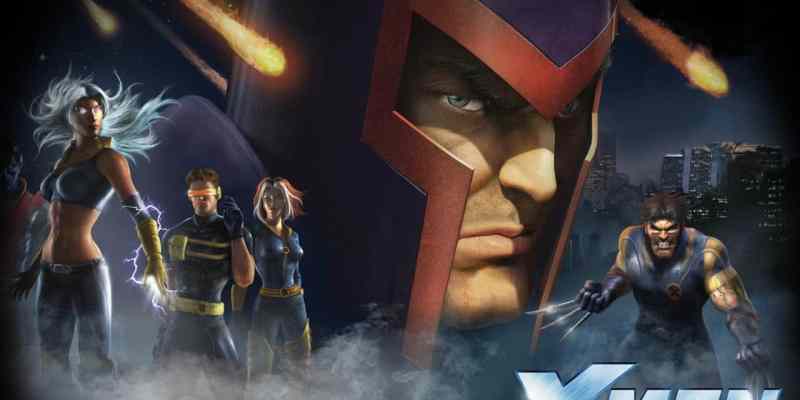The Marvel Cinematic Universe: It is all-encompassing, has pretty much every actor in Hollywood within it, and is everyone’s go-to answer when anyone asks, “How do you make a shared universe?” However, I believe that there was an MCU before the MCU, and it came in the fascinating form of Raven Software’s X-Men Legends and Marvel Ultimate Alliance.
The action role-playing game X-Men Legends was released in 2004 and starred everyone’s favorite mutated pariahs. It wasn’t set in any established Marvel comic universe, so the slate was clean. The basic premise is that there is a massive clash among the X-Men, the Brotherhood of Mutants, and the government, which is utilizing the newly created Sentinels. When the curtain falls on this enjoyable adventure, we are left with one final scene. As the X-Men celebrate their victory, they are being watched by an ominous figure — Apocalypse.
The success of X-Men Legends appropriately led to a sequel titled X-Men II: Rise of Apocalypse. This story is based loosely on the famous comic storyline “Age of Apocalypse,” and it follows the X-Men and Brotherhood as they join forces against Apocalypse and his indomitable forces of evil.
There are many twists and turns along the way. Friends become foes, and Apocalypse comes close to bringing the world under his control, until the united might of the X-Men and Brotherhood defeats him. When all is said and done, the two factions return to the status quo of being on opposing sides.

As is typical for a franchise, threats escalated from one X-Men Legends to the second, and then Marvel: Ultimate Alliance hit shelves in 2006 to take things even further. Raven Software decided to strike while the iron was scalding hot and expand to incorporate the rest of the Marvel universe with the X-Men.
Marvel: Ultimate Alliance has the heroes and villains of this particular Marvel continuity doing battle across the universe, from the hellish realm of Mephisto to the center of the Shi’ar Empire where Galactus is eating planets. Nothing is off the table, and it is phenomenal. And at the center of it all is Doctor Doom. This mortal man has tricked gods and monsters and become a god himself in the process.
The storyline for Marvel: Ultimate Alliance is ultimately outstanding, and thanks to the world being built up in the previous two titles, you care about the characters involved — particularly the mutants. There are also casualties along the way, which is quite surprising. The game gives you the option of who will be sacrificed in one particular moment, and whoever dies has ramifications further down the line within the game.
At the end of the game, Raven Software pulls yet another twist: Our heroes have irked Galactus, and he is on his way to Earth to exact revenge.
The X-Men Legends games and first Marvel: Ultimate Alliance are a strong trilogy in themselves. It offers a lot of impressive storytelling moments and character arcs that Marvel and their writing team seem to have taken inspiration from. The particular plot point that comes to mind is Doom’s ascension to godhood. Years later, Jonathan Hickman crafted a similar journey for the Latverian dictator in 2015’s Secret Wars.

The End of the Universe
It took several different teams to wind down this particular Marvel comic universe. Assorted platform developers Vicarious Visions, n-Space, and Savage Entertainment chose a less bombastic storyline in Marvel: Ultimate Alliance 2, but it is perhaps more personal. They decided that instead of heroes versus villains, players should have to choose between heroes in their interpretation of 2006 – 07’s Civil War.
Much like the studio before them, these developers went with an original take on this event, and though there were several key moments ripped from the page, Marvel: Ultimate Alliance 2 ended on a safer and clichéd note than its comic inspiration.
Perhaps unintentionally, it winds up being a smart way to conclude the Ultimate Alliance universe, as it ends with hope for the future of this recovering world. When both sides unite to face a common enemy, the end results in the big bad losing and the good guys trying to rebuild. It caps off the universe well with a look to more hypothetical adventures down the line.

It works because when Marvel Ultimate Alliance 3: The Black Order rolled around in 2019, it was established to be set in a separate universe from its predecessors. This may have occurred because the prior MUC universe was built before the foundations of the Marvel Cinematic Universe had fully formed. Too much time had passed, and the storylines and relationships that were built in the old games were buried for a kind of cohesion with Marvel’s current status quo.
This is a shame because, for so long, the universe that began with X-Men Legends was arguably the best series of connected titles in gaming involving these characters.
This Marvel comic universe catered to fans and non-fans alike, and it was, pardon the pun, a marvel. To juggle over 100 characters that had various levels of dialogue with each other, as well as engaging gameplay and a cinematic-level narrative in each of its titles, this was the Marvel comic universe for gamers.
